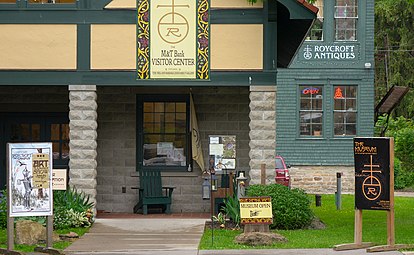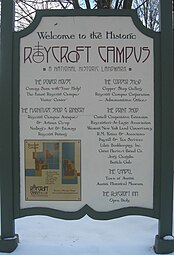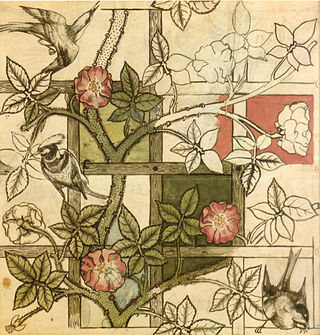
The Arts and Crafts movement was an international trend in the decorative and fine arts that developed earliest and most fully in the British Isles and subsequently spread across the British Empire and to the rest of Europe and America.

Art colonies are organic congregations of artists in towns, villages and rural areas, who are often drawn to areas of natural beauty, the prior existence of other artists, art schools there, or a lower cost of living. They are typically mission-driven planned communities, which administer a formal process for awarding artist residencies. A typical mission might include providing artists with the time, space, and support to create, fostering community among artists, and providing arts education, including lectures and workshops.
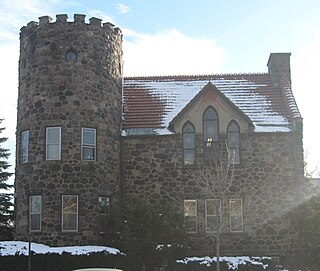
Aurora is a town in Erie County, New York, United States. The population was 13,782 at the 2010 census. It is one of the "Southtowns" of Erie County and is also erroneously called "East Aurora", the name of its principal village. The town is centrally located in the county, southeast of Buffalo.

East Aurora is a village in Erie County, New York, United States, southeast of Buffalo. It lies in the eastern half of the town of Aurora. The village population was 5,998 per the 2020 census. It is part of the Buffalo-Niagara Falls metropolitan area. In 2015, East Aurora was rated the third-best town to raise a family in New York State by Niche. According to the National Council of Home Safety and Security, it is also among the safest places to live in New York State.
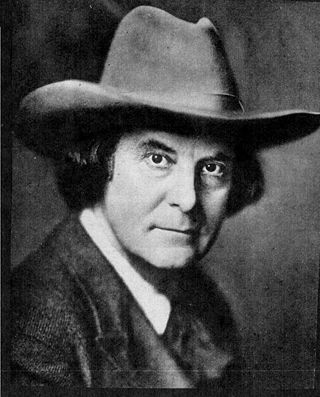
Elbert Green Hubbard was an American writer, publisher, artist, and philosopher. Raised in Hudson, Illinois, he had early success as a traveling salesman for the Larkin Soap Company. Hubbard is known best as the founder of the Roycroft artisan community in East Aurora, New York, an influential exponent of the Arts and Crafts movement.

Gustav Stickley was an American furniture manufacturer, design leader, publisher, and a leading voice in the American Arts and Crafts movement. Stickley's design philosophy was a major influence on American Craftsman architecture.

A Message to Garcia is a widely distributed essay written by Elbert Hubbard in 1899, expressing the value of individual initiative and conscientiousness in work. The essay's primary example is a dramatized version of a daring escapade performed by an American soldier, First Lieutenant Andrew S. Rowan, just before the Spanish–American War. The essay describes Rowan carrying a message from President William McKinley to "Gen. Calixto García, a leader of the Cuban insurgents somewhere in the mountain fastnesses of Cuba—no one knew where". The essay contrasts Rowan's self-driven effort against "the imbecility of the average man—the inability or unwillingness to concentrate on a thing and do it".
The point I wish to make is this: McKinley gave Rowan a letter to be delivered to Garcia; Rowan took the letter and did not ask, "Where is he at?" By the Eternal! there is a man whose form should be cast in deathless bronze and the statue placed in every college of the land. It is not book-learning young men need, nor instruction about this and that, but a stiffening of the vertebrae which will cause them to be loyal to a trust, to act promptly, concentrate their energies: do the thing—"Carry a message to Garcia!"
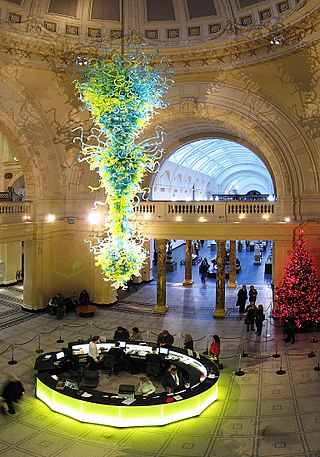
American craft is craft work produced by independent studio artists working with traditional craft materials and processes. Examples include wood, glass, clay (ceramics), textiles, and metal (metalworking). Studio craft works tend to either serve or allude to a functional or utilitarian purpose, although they are just as often handled and exhibited in ways similar to visual art objects.

Alice Moore Hubbard was a noted American feminist, writer, and, with her husband, Elbert Hubbard was a leading figure in the Roycroft movement – a branch of the Arts and Crafts Movement in England with which it was contemporary. Moore Hubbard served as the general manager for the collective, along with managing the Roycraft Inn. She was also the principal of Roycroft School for Boys.
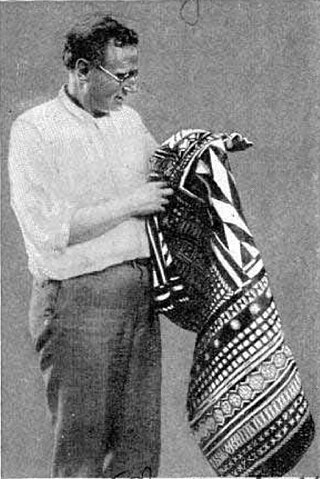
William Joseph "Dard" Hunter was an American authority on printing, paper, and papermaking, especially by hand, using sixteenth century tools and techniques. He is known for, among other things, the production of two hundred copies of his book Old Papermaking, for which he prepared all aspects: Hunter wrote the text, designed and cast the type, did the typesetting, handmade the paper, and printed and bound the book. A display at the Smithsonian Institution that appeared with his work read, "In the entire history of printing, these are the first books to have been made in their entirety by the labors of one man." He also wrote Papermarking by Hand in America (1950), a similar but even larger undertaking.
Bertha C. Crawford Hubbard (1861–1946) was one of the founders of the Roycroft movement, an American branch of the Arts and Crafts movement of the late 19th and early 20th centuries.

The Southtowns is a region of Western New York, United States, that lies within the snowbelt or ski country. It includes the southern suburbs of Buffalo, New York. This is the common name for the southern part of Erie County, New York.

Craftsman Farms is a historic house located in Parsippany-Troy Hills, Morris County, New Jersey, United States. It was founded by noted early 20th century designer Gustav Stickley as a farm and school for the Arts and Crafts movement. It remained in use until 1915 when it was sold to a family and became a private house.
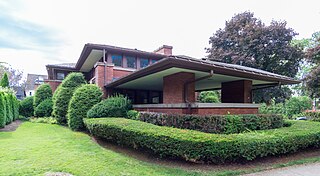
The William R. Heath House was designed by Frank Lloyd Wright, built from 1903 to 1905, and is located at 76 Soldiers Place in Buffalo, New York. It is built in the Prairie School architectural style. It is a contributing property in the Elmwood Historic District–East historic district and a City of Buffalo landmark.

George and Gladys Scheidemantel House is a historic home located at East Aurora in Erie County, New York. It is a locally distinctive example of the Arts and Crafts movement style of architecture built in 1910. It is a two-story, frame, bungalow that combines elements of the American Foursquare and Craftsman styles. George Scheidemantel was for a time head of the Roycroft Leather Shop and the house designer, William Roth, was head Roycroft carpenter.
Charles P. Limbert (1854–1923) was an American furniture designer. He is considered one of the most successful furniture leaders in the history of Grand Rapids and the Arts and Crafts movement in America. The furniture that bears his name is highly sought after and seriously collected to this day. His designs were mainly inspired by such diverse influences as English Arts and Crafts, Dutch folk furniture, Scottish architect/designer Charles Rennie Mackintosh, and the Vienna Secession.
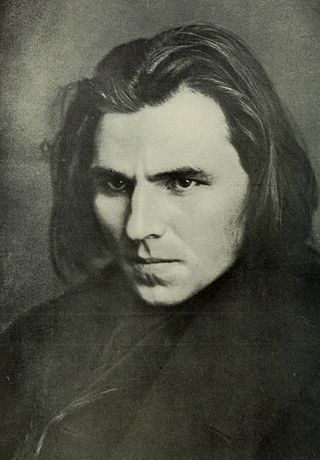
Jerome Connor was an Irish sculptor.

Ammonia fuming is a wood finishing process that darkens wood and brings out the grain pattern. It consists of exposing the wood to fumes from a strong aqueous solution of ammonium hydroxide which reacts with the tannins in the wood. The process works best on white oak because of the high tannin content of this wood. Fumed oak is also called fumigated oak or smoked oak. Other species may also be fumed, but usually will not darken as much as white oak. In America, the introduction of the process is usually associated with the furniture maker Gustav Stickley at the beginning of the 20th century, but fuming was known in Europe before this.

Alexis Jean Fournier was an American artist. He is well known in Minnesota for his naturalistic paintings of Minneapolis and St. Paul landmarks, such as Farnham's Mill, which was one of the earliest mills established in Minneapolis. Fournier is also renowned beyond Minnesota as an important figure in the Arts and Crafts movement.

The Larkin Company, also known as the Larkin Soap Company, was a company founded in 1875 in Buffalo, New York as a small soap factory. It grew tremendously throughout the late 1800s and into the first quarter of the 1900s with an approach called "The Larkin Idea" that transformed the company into a mail-order conglomerate that employed 2,000 people and had annual sales of $28.6 million in 1920. The company's success allowed them to hire Frank Lloyd Wright to design the iconic Larkin Administration Building which stood as a symbol of Larkin prosperity until the company's demise in the 1940s.




